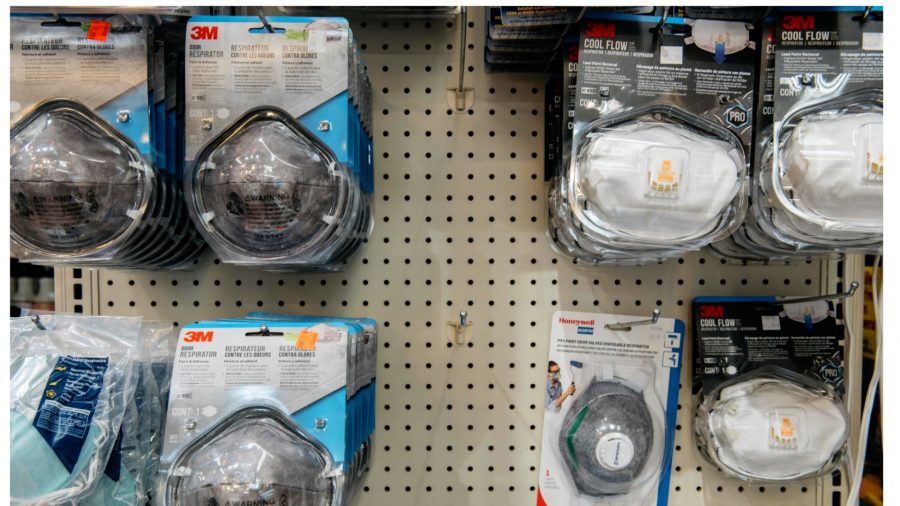A recent study has detailed that masks with exhalation vents or valves are not ideal in fighting the spread of the CCP virus, the Centers for Disease Control and Prevention (CDC) said in an updated guideline late last week.
In the CDC guide, updated on Aug. 7, the agency notes that “COVID-19 spreads mainly from person to person through respiratory droplets produced when an infected person coughs, sneezes, talks, or raises their voice.”
“The purpose of masks is to keep respiratory droplets from reaching others to aid with source control. Masks with one-way valves or vents allow exhaled air to be expelled out through holes in the material. This can allow exhaled respiratory droplets to reach others and potentially spread the COVID-19 virus,” the guide reads.
“Therefore, CDC does not recommend using masks if they have an exhalation valve or vent,” it continued.
The updated guide was made public after researchers at Duke University released a study about several types of face coverings, including the newly popular “neck gaiters.”
The study said that that particular type of face-covering offers very little to no protection because they break up the largest airborne particles into a spray of smaller droplets that potentially will remain even longer in the air.

“We noticed that speaking through some masks (particularly the neck fleece) seemed to disperse the largest droplets into a multitude of smaller droplets, which explains the apparent increase in droplet count relative to no mask in that case,” the study claims.
“Considering that smaller particles are airborne longer than large droplets (larger droplets sink faster), the use of such a mask might be counterproductive,” it continued.
In the study, researchers tested 14 different commonly available types of masks, including a professional surgical grade N95 mask. For each test, a camera was used to record a video of about 40 seconds to see the number of droplets that were emitted while the tester spoke with each type of face covering. As a reference in the study, there was also a test with the speaker wearing no protective mask or covering.
The CDC has said that health officials advise people to wear masks during the CCP (Chinese Communist Party) virus to protect others.
“Masks may help prevent people who have COVID-19 from spreading the virus to others. Wearing a mask will help protect people around you, including those at higher risk of severe illness from COVID-19 and workers who frequently come into close contact with other people,” the CDC stated.
The agency previously said that surgical grade N95 respirators offer the highest level of protection against the CCP virus, followed by surgical grade masks. But health officials do not recommend the general public to wear N95 masks or surgical masks, because they should be reserved for medical professionals.

When health care workers wear surgical masks, there’s good evidence it limits the spread of respiratory viral infections in hospitals. But there is no clear evidence that surgical masks protect members of the public from getting or passing on these sorts of infections—likely because of incorrect use.
To offer any protection, masks need to be worn correctly and consistently when in contact with other people. Most studies conducted so far—none of which were conducted during the current pandemic—didn’t explicitly look at the level of adherence to mask-wearing. Those that did reported variable adherence, ranging from “good” to “poor.”
The CDC also said that no single personal protective equipment (PPE) is an excuse to drop other public health measures, such as social distancing and frequent hand-washing.
Epoch Times reporter Olga Perski contributed to this report.

